Harvest resources to construct and upgrade buildings, expand your base, and grow in wealth and power.
-
Central Command
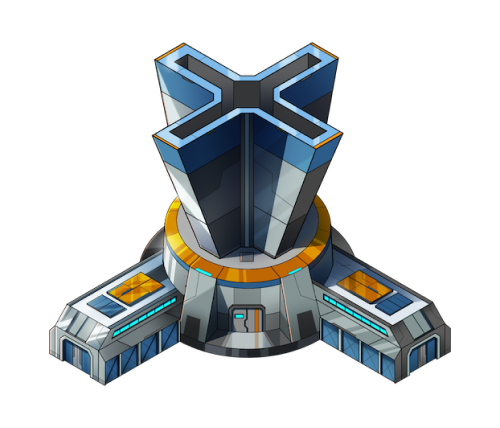
Nobody likes meetings, but everybody needs somewhere safe and comfortable to have them.
Whether they are open-air amphitheatres on a gorgeously terraformed planet or radiation-hardened, pressurised habitats on a dangerously unstable asteroid, every system has a central command—a seat of government, diplomacy, and debate.
As your system grows in wealth and power, you'll need more and more space in your central command, and you'll want to display the status of your system to visiting dignitaries!
A big, fancy command centre means a wealthy and influential system.
-
The Starport
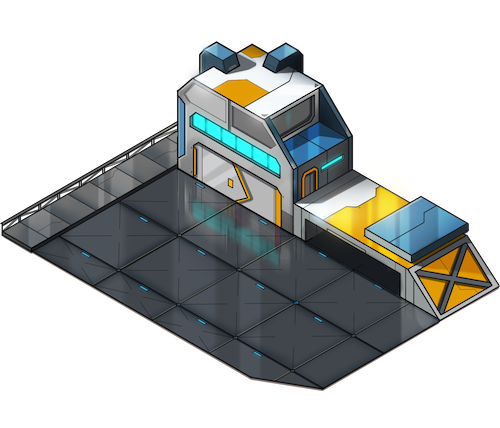
The Starport serves as a place where ships are moored, built, repaired, refitted, and managed.
They vary in size and shape—from a dirt-covered little mound in a remote cattle station, ready to collect meat on the hoof, to a miles-long section of the great wheel of a huge orbital station.
Starports on stations often have huge areas full of shopping, entertainment and sleeping quarters attached to cater to merchant crews who want to enjoy themselves without having to go through quarantine to roam freely in a star system.
-
Crystal Mining Rig
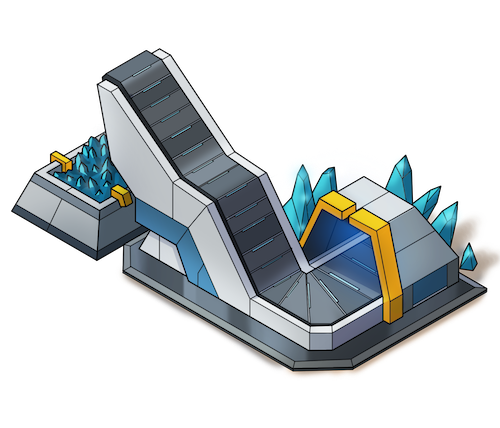
Two very enterprising Companions, with a love of tedium, designed this apparatus which has become the most popular way of collecting crystals from the regolith of dusty moons and planets.
Many of the sorts of crystals useful in the Settled Nebulas are tiny, fragile, or otherwise difficult to extract.
The Crystal Rig employs vibration, electromagnetic sorting fields, and chemical processes to sort useful Crystal from piles of dust and soil, which are safely returned to where they came from.
To use the crystal rig, humans or robots bring it tonnes of unsorted material, using anything from automated diggers to wheelbarrows!
The rig can operate in any level of gravitation, atmosphere, or radiation and can be easily repaired with minimal mechanical skill.
-
Ore Mining Module
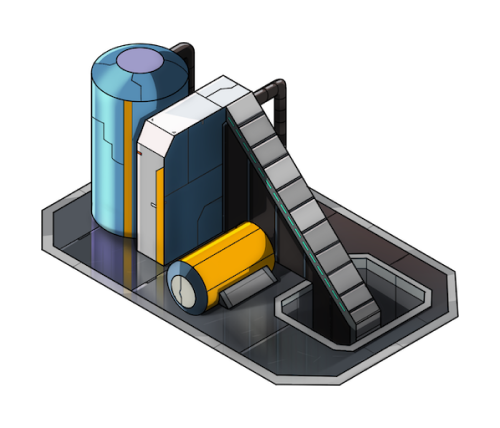
Nearly everything that we need for modern interstellar civilisation is made, at least in part, of metal. We need iron, aluminium, titanium, and hundreds of rare minerals to create the advanced alloys that allow us to travel through space, tunnel across vast distances, and create the thinking machines that make our way of life possible.
Ore mining modules are one of the most numerous mass-produced machines that our society creates. They can be set up anywhere from asteroids to planets or even moons; built on solid ground or into ships; set into pontoons to float on seas of super-chilled methane or magma.
Ore mining modules consist of a processing area that can be filled with powerful machines, deadly plasmas or disintegrating lasers and fields. Or they can just be a place for human or robot workers to crush and hand-sort valuable ore from dross.
Ore mining modules also contain a little port for shuttles and ore wagons, as well as tiny, cramped living quarters to sustain those human and robot staff who require earth like conditions to survive. Many romances, dramas and sitcoms take place on ore mining stations, and they are a ubiquitous and intimately familiar part of our culture.
-
The Launchpad

From this Launchpad—stocked with fuel, tools, and monitoring equipment—you can launch resource-gathering missions to planets and asteroids.
Launchpads are full of high-maintenance systems and need a bit of space and protection to operate properly, so they can only be situated on habitable planets or under protective domes.
There are fully automated launch points that operate on a handful of airless satellites and asteroids, operated by adventuresome Companions and other artificial intelligences, but they are the exception that proves the rule.
A Launchpad takes a bit of work and a chunk of investment, but it pays off in the end by returning valuable resources to its owner!
-
Research Lab
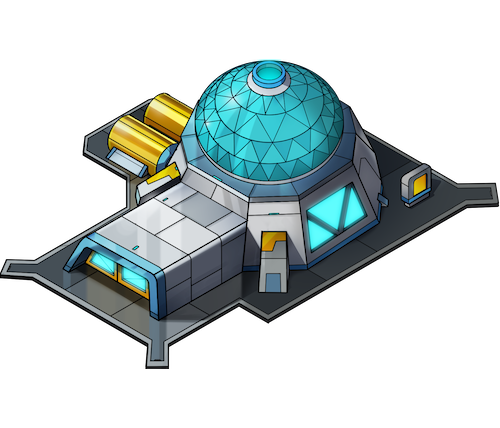
Although these labs many resources, staff, and funding to construct and maintain, they are immensely valuable, as the scientific and engineering research undertaken in these domed, airy, high-tech spaces can improve the quality and capacity of all of your other assets, from ore mining modules to fighter ships.
Other systems may be better-resourced than yours, but if you invest in research, in the long run you might very well have the edge!
A research base will be geared towards its purpose and will have a vastly different appearance if it is, say, suspended in the plasma of a star, than it would if it were performing terraforming functions on a rocky planet.
- © 2024 The SolaVerse
- Terms
- Privacy
- Contact